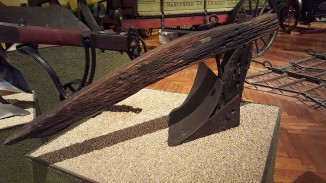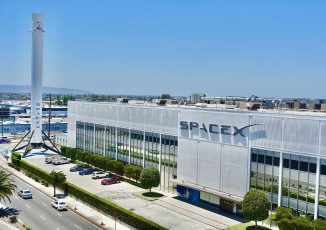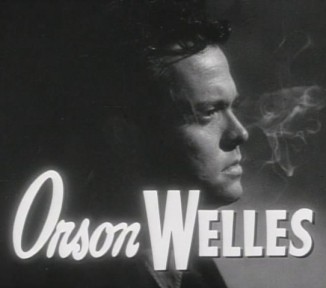70 years ago today Roger Bannister, a 25-year-old British medical student, became the first man to run a mile in under four minutes—significant because for many years nobody believed it was possible, and thus no one had achieved it. As soon as Bannister set it as a goal and proved it was possible, the record lasted just 46 days—and within one year four men had matched the accomplishment. ‘Sir’ Roger Bannister went on to become a neurologist. READ more about this unique achievement… (1954)

As of June 2022, the “four-minute barrier” has been broken by 1,755 athletes. It has been the benchmark example of an achievement that humanity needed to know was possible before believing it could surpass it, a strange phenomenon that can be seen in many athletic endeavors from track and field to skateboarding, where Tony Hawk became the first vertical pro skateboarder to land a ‘900’ during the 1999 X games. In the 2004 edition competitive season, it was completed by two separate skateboarders.
No woman has yet run a four-minute mile. The women’s world record is currently at 4:07.64, set by Faith Kipyegon of Kenya at the Diamond League meeting in Monaco on 21 July 2023. An earlier women’s world record, 4:12.56 set by Svetlana Masterkova of Russia on 14 August 1996 at Zürich, stood for almost 23 years: Masterkova became the first woman to run the mile in less than 4 minutes and 15 seconds.
MORE Good News on this Day:
- The Eiffel Tower opened as the entrance arch for the Exposition Universelle, a World’s Fair marking the centennial celebration of the French Revolution (1889)
- Willie Mays, the stellar center-fielder who hit 660 career home runs as one of the greatest baseball players of all time, was born (1931)
- President Eisenhower signed the Civil Rights Act of 1960, a US federal law that established federal inspection of local voter registration polls, especially needed in the South, and introduced penalties for anyone who obstructed someone’s attempt to register to vote (1960)
- The first open election in South Africa was held, and the once outlawed African National Congress won control of parliament from the all-white minority government (1994)
- On his trip to Syria, Pope John Paul II became the first pope ever to enter a mosque (2001)
- Sadiq Khan became the first Muslim mayor of a Western capital, as he beat his Conservative rival in London (2016)
187 years ago today, the American blacksmith John Deere launched his first agricultural product—a plow forged in steel that was self-scouring, and earned the nickname “The Plow that Broke the Plains.” His inspiration came from memories of working at his father’s tailoring shop in Rutland, Vermont, where he used to polish needles by running them through sand.

John Deere settled in Grand Detour, Illinois. At the time, Deere had no difficulty finding work due to a lack of blacksmiths working in the area, but he also found a regional problem that cast-iron plows were not working very well in the tough prairie soil of Illinois.
In 1827, Deere developed and manufactured the first commercially successful cast-steel plow. The wrought-iron framed plow had a polished steel share. This made it ideal for the tough soil of the Midwest and worked better than other plows. By early 1838, Deere completed his first steel plow and sold it to a local farmer, Lewis Crandall, who quickly spread word of his success with Deere’s plow. Subsequently, two neighbors soon placed orders with Deere. By 1841, Deere was manufacturing 75–100 plows.
By 1855, Deere’s factory sold more than 10,000 such plows, and eleven years after that, he incorporated his name and mark into Deere & Company, one of the largest and leading agricultural and construction equipment manufacturers in the world ever since. (1837)
22 years ago today, Elon Musk founded SpaceX, the first entirely private rocket-launching company. Driven on by Musk’s insatiable desire for progress, the certification of the SpaceX Dragon Capsule ended an almost 10 year monopoly of the Russian-made Soyuz spacecraft as the main vehicle for NASA to reach the ISS. By introducing reusable rockets, and bringing launch costs down to only a few million, SpaceX has created another industrial revolution, and incited a flurry of growth-stage private space exploration and industry. (2002)

Beyond big-picture stuff, SpaceX’s achievements include the first privately funded liquid-propellant rocket to reach orbit around Earth, the first private company to successfully launch, orbit, and recover a spacecraft, the first private company to send a spacecraft to the International Space Station, the first private spacecraft launched into heliocentric orbit, the first vertical take-off and vertical propulsive landing for an orbital rocket, the first reuse of an orbital rocket, the first private company to send astronauts to orbit and to the International Space Station, the first reuse and reflight of a crewed space capsule, the first all civilian crew to dock with the International Space Station, and the longest unbroken run of launches without a mission failure of partial mission failure. SpaceX has flown the Falcon 9 series of rockets over one hundred times.

Before all this good news however, Musk’s brainchild almost died in the womb. The first three launches of the Falcon 9 rocket, between 2006 and 2008, all resulted in failures, which almost ended the company. Financing for Tesla Motors had failed as well, and consequently Tesla and Musk personally were both nearly bankrupt at the same time. Musk was reportedly “waking from nightmares, screaming and in physical pain” because of the stress. (2002)
Happy 63rd Birthday to George Clooney, the actor, director, screenwriter, and producer, who won two Academy Awards—and was named World’s Sexiest Man more times than that.
Born in Kentucky—with singer-actress Rosemary Clooney as an aunt—he rose to fame playing Dr. Doug Ross on TV’s ER. During a film role in Out of Sight, he first worked with director Steven Soderbergh, a long-time collaborator. Soderbergh’s heist comedy trilogy Ocean’s Eleven (and Ocean’s 12, and 13) became the star‘s biggest commercial success.

He made his directorial debut a year later and went on to direct and co-write films like Good Night, and Good Luck; The Ides of March; and The Monuments Men. Clooney won an Academy Award for Best Supporting Actor for Syriana, and later earned Best Actor nominations for Michael Clayton, Up in the Air, and The Descendants. (Don’t forget the cult classic, O’ Brother, Where Art Thou?)
This week, when asked how he feels about the milestone birthday, he quipped, “Listen, I’m not thrilled with it, but it’s better than dead. So I’ll take it.”
He has been nominated for Academy Awards in six different categories, a record he shares with Walt Disney and Alfonso Cuarón, the Mexican who directed Clooney did Gravity. After winning the Oscar for Best Picture for co-producing Argo, he became—along with Brad Pitt—one of only two actors to win both the Academy Awards for Best Supporting Actor and Best Picture. WATCH a fun interview about lockdown. (1961)
And, on this day in 1915, Orson Welles was born in Kenosha, Wisconsin. The actor, director, writer and producer made his mark in radio and film with two groundbreaking works.
 The radio broadcast War of the Worlds worried countless listeners who thought the theatrical news reports of a Martian invasion were real. His very first film, Citizen Kane, which he co-wrote, produced, directed, and starred in, is consistently ranked as one of the greatest films of all time. His distinctive directorial style featured layered and nonlinear narrative forms, innovative uses of lighting such as chiaroscuro, unusual camera angles, sound techniques borrowed from radio, deep focus shots, and long takes. Welles also broke new ground in theater with Caesar, his 1937 Broadway adaptation of Julius Caesar. Since the War of the Worlds broadcast aired on Welles’ Mercury Radio Theater, the FCC established rules against hoaxes to avoid unnecessarily tying up emergency phone lines.
The radio broadcast War of the Worlds worried countless listeners who thought the theatrical news reports of a Martian invasion were real. His very first film, Citizen Kane, which he co-wrote, produced, directed, and starred in, is consistently ranked as one of the greatest films of all time. His distinctive directorial style featured layered and nonlinear narrative forms, innovative uses of lighting such as chiaroscuro, unusual camera angles, sound techniques borrowed from radio, deep focus shots, and long takes. Welles also broke new ground in theater with Caesar, his 1937 Broadway adaptation of Julius Caesar. Since the War of the Worlds broadcast aired on Welles’ Mercury Radio Theater, the FCC established rules against hoaxes to avoid unnecessarily tying up emergency phone lines.

On this day 11 years ago, Lillian Weber of Davenport, Iowa celebrated her 99th birthday on a quest to sew by hand 1,000 dresses for children in Africa before her 100th birthday. TV station WQAD made Lillian famous, broadcasting her pledge to the world as she sewed one dress every day, and as she reached her goal two months early. (2013) – Photo screenshot from WQAD video.

And on this day in 1994, the Channel Tunnel was opened—the first land link between Britain and Europe since the Ice Age 40 million years ago. Nicknamed The Chunnel, it moves 10 million people every year underwater between Kent, England, and the Calais area of France, beneath the English Channel. Its lowest point is 250 feet underground, (75m) below the sea bed.
The £9 billion construction project took 6 years to build, and uses electricity for everything from shuttling trucks and cars to moving international goods. The Queen, after completing the passenger trip of 31 miles (50 km) traveling at almost 100 miles per hour, said it was one of the world’s great technological achievements.
SHARE the Milestones, Memories, and Music…





















[…] post Good News in History, May 6 appeared first on Good News […]
[…] post Good News in History, May 6 appeared first on Good News […]
[…] Posted From: https://www.goodnewsnetwork.org/events060506/ […]
[…] Good News Network […]
[…] Source: Good News Network […]